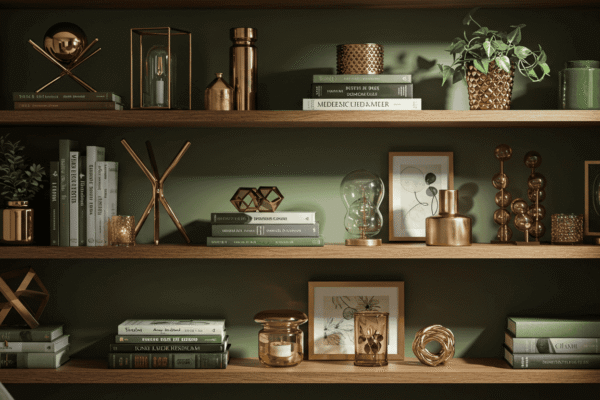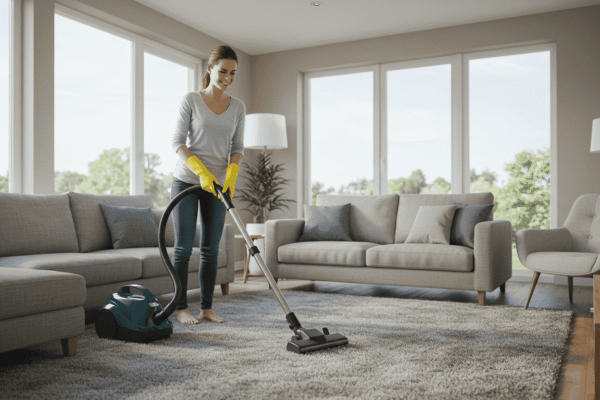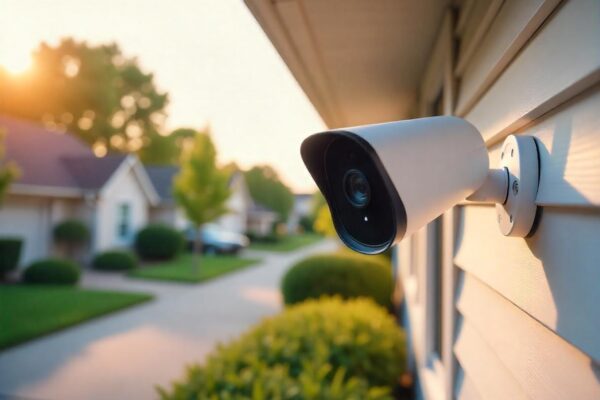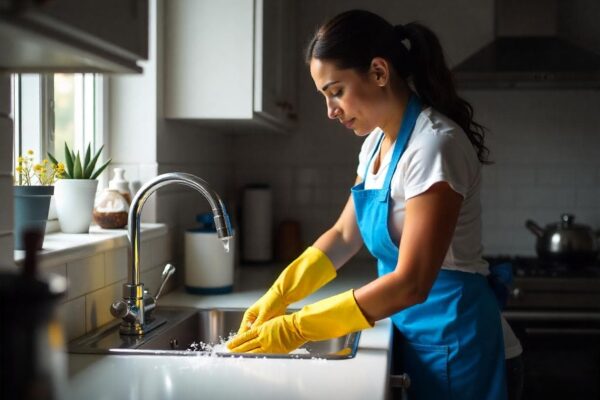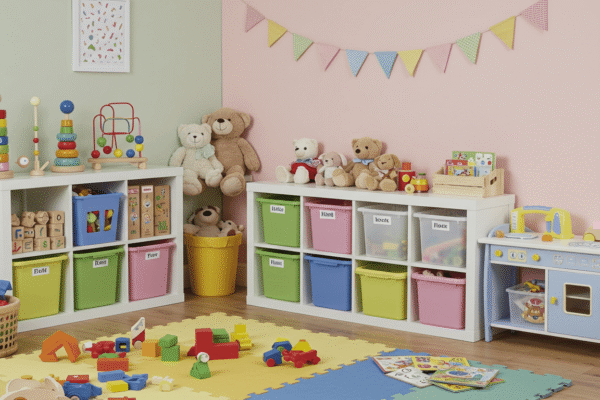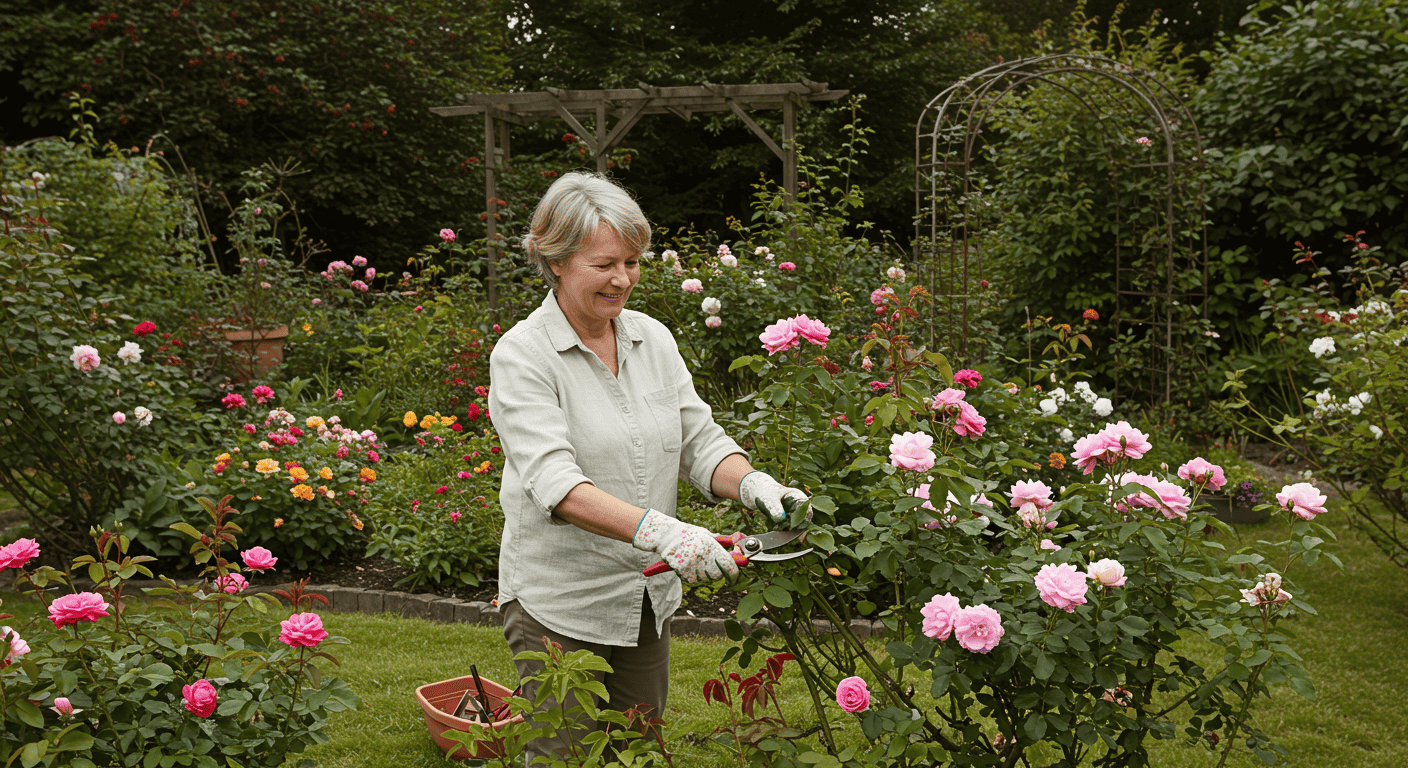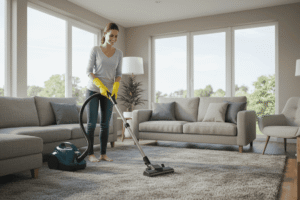Smart Gardening is revolutionizing the way we grow food at home, making it easier than ever to create indoor edible gardens that are both productive and sustainable. With the right techniques and planning, even small apartments or limited spaces can become thriving green hubs. From selecting the best edible plants indoors to optimizing light, water, and nutrients, smart gardening allows you to enjoy fresh herbs, greens, and vegetables year-round. Whether you’re a beginner or an experienced gardener, adopting indoor gardening tips can help you maximize space, save resources, and bring a touch of nature indoors.
Introduction to Smart Gardening
Smart Gardening is more than just growing plants indoors—it’s a modern approach that combines planning, innovation, and efficiency to create productive indoor edible gardens. By understanding how to optimize space, light, water, and nutrients, you can cultivate a wide variety of edible plants indoors without relying on traditional outdoor gardens. This approach is perfect for anyone looking to enjoy fresh produce year-round, even in small apartments or homes with limited outdoor space.
What is Smart Gardening?
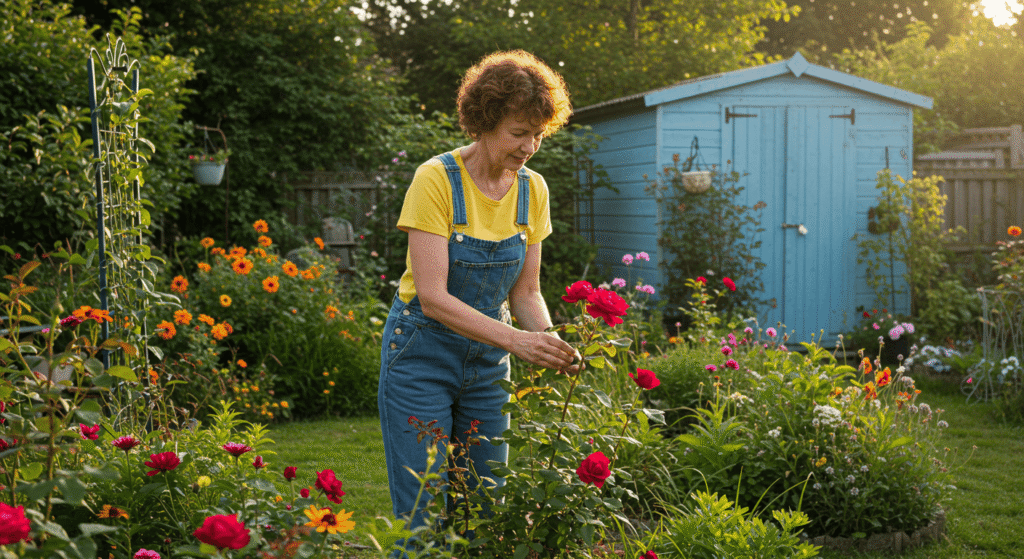
Smart Gardening refers to the use of innovative techniques, careful planning, and resource-efficient practices to maximize the growth and yield of indoor edible gardens. It often involves:
- Efficient use of available space through vertical or tiered gardening.
- Optimized lighting conditions, including natural light and artificial supplements.
- Water-saving techniques such as self-watering containers or hydroponic systems.
- Monitoring plant health and growth patterns for better results.
By combining these elements, smart gardening allows gardeners to grow a variety of edible plants indoors while reducing waste and effort.
Why Indoor Edible Gardens Are Gaining Popularity
The rise of indoor gardening tips and smart gardening practices is fueled by several benefits:
- Fresh produce year-round: Herbs, greens, and vegetables are available regardless of the season.
- Sustainable living: Growing food indoors reduces reliance on store-bought produce and lowers carbon footprint.
- Small-space gardening: Even compact apartments can accommodate productive indoor edible gardens.
Comparison Table: Traditional Gardening vs. Smart Indoor Gardening
| Feature | Traditional Gardening | Smart Indoor Gardening |
|---|---|---|
| Space | Requires outdoor space | Can thrive in small indoor areas |
| Water Use | High, less controlled | Efficient, with self-watering or hydroponics |
| Maintenance | Labor-intensive | Optimized through planning and technology |
| Yield | Seasonal | Year-round potential |
| Plant Variety | Limited by climate | Can grow a wide range indoors |
This table highlights how smart gardening transforms the traditional approach, making indoor edible gardens more efficient, convenient, and sustainable.
Choosing the Right Edible Plants for Indoors
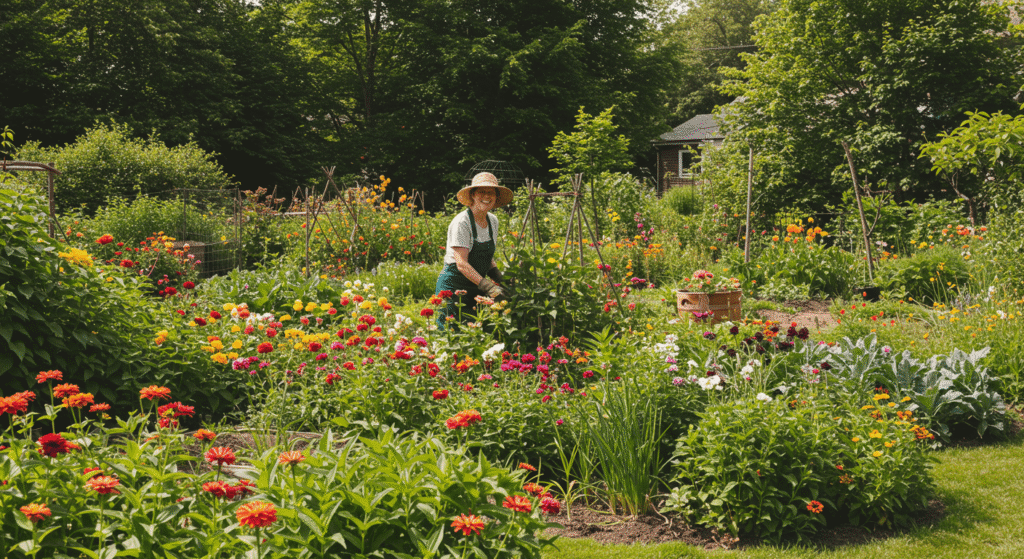
Selecting the right plants is key to creating a productive indoor edible garden. The success of your smart gardening efforts depends on choosing plants that match your space, light conditions, and your ability to care for them. Focusing on easy-to-grow herbs and vegetables ensures you’ll enjoy fresh edible plants indoors without frustration.
Best Herbs for Indoor Gardens
Many herbs thrive indoors, making them perfect for smart gardening setups. Common favorites include:
- Basil: Fast-growing and aromatic, ideal for cooking and garnishing.
- Mint: Hardy and refreshing, perfect for teas and salads.
- Parsley: Nutrient-rich and versatile for various dishes.
- Cilantro: Bright flavor that complements a wide range of cuisines.
These herbs can grow well in small pots or containers, making them ideal for kitchens or windowsills.
Vegetables and Greens That Thrive Indoors
Certain vegetables and leafy greens are also well-suited for indoor gardening tips. Examples include:
- Lettuce: Quick-growing and perfect for fresh salads.
- Spinach: Nutrient-dense and thrives in moderate light.
- Microgreens: Packed with nutrients, fast-growing, and great for limited spaces.
- Cherry Tomatoes: Compact varieties grow well in pots with sufficient light.
Low-Light Options
Not every indoor space receives abundant sunlight, but some plants adapt well to lower-light conditions. Using the right plants for low-light areas ensures your indoor edible garden remains productive.
Table: Low-Light Indoor Edible Plants
| Plant | Light Requirement | Growth Time | Tips |
|---|---|---|---|
| Mint | Low to moderate | 4–6 weeks | Trim regularly to encourage bushy growth |
| Parsley | Low | 6–8 weeks | Keep soil slightly moist, avoid direct sunlight |
| Spinach | Low to moderate | 5–7 weeks | Grow in containers with good drainage |
| Lettuce | Low | 4–6 weeks | Rotate trays for even light exposure |
| Microgreens | Low to moderate | 2–3 weeks | Harvest early for tender, nutrient-rich greens |
This table helps you identify which plants can flourish even if your indoor space has limited light, ensuring your smart gardening experience is both practical and rewarding.
Setting Up Your Indoor Edible Garden

Creating a thriving indoor edible garden starts with careful setup. Proper planning ensures your smart gardening efforts yield healthy, productive plants. From choosing the right location to selecting containers and growing mediums, every decision impacts plant growth and ease of maintenance.
Selecting the Perfect Location
Choosing the ideal spot for your indoor edible garden is crucial. Consider the following factors:
- Sunlight: Most edible plants indoors need bright, indirect light. Position them near windows or under supplemental lighting if natural light is insufficient.
- Temperature: Keep plants in areas with stable temperatures, avoiding drafts or heat sources.
- Airflow: Good air circulation prevents mold and promotes healthy growth.
- Convenience: Place plants where you can easily water, prune, and harvest them regularly.
By selecting the right location, you create a strong foundation for a productive and enjoyable smart gardening experience.
Containers and Growing Mediums
The choice of containers and growing mediums is another key factor for successful indoor gardening tips. Different plants thrive in different environments, so understanding options is essential:
- Soil types: Well-draining potting soil is ideal for most herbs and vegetables.
- Raised beds: Great for larger indoor spaces, allowing more soil volume and easier maintenance.
- Pots and trays: Compact options for small apartments, balconies, or windowsills.
Container Guide: Choosing the Right Setup for Your Plants
| Container Type | Best Plants | Pros | Cons |
|---|---|---|---|
| Small pots | Herbs like basil, mint, parsley | Compact, easy to move | Limited root space, frequent watering |
| Trays | Microgreens, lettuce | Space-efficient, easy harvesting | Shallow soil, may dry out quickly |
| Raised beds | Cherry tomatoes, leafy greens | More soil, better yield | Requires more space, heavier |
| Deep pots | Spinach, parsley | Supports deeper roots, better growth | Larger footprint, heavier to move |
Selecting the right combination of containers and growing mediums ensures your indoor edible garden thrives while fitting your available space and maintenance capacity.
Smart Gardening Techniques
Mastering smart gardening requires understanding modern techniques that maximize efficiency and yield. By exploring innovative methods, you can make your indoor edible gardens more productive, space-efficient, and easier to maintain.
Hydroponics and Soilless Methods
Hydroponics and other soilless growing methods are gaining popularity among indoor gardening tips enthusiasts. These techniques use nutrient-rich water instead of traditional soil, offering several benefits:
- Faster plant growth and higher yields
- Reduced risk of soil-borne pests and diseases
- Efficient use of water and nutrients
Hydroponic systems are ideal for edible plants indoors, especially leafy greens and herbs, where rapid growth and consistent quality are desirable.
Vertical Gardening for Space Efficiency
Vertical gardening is a smart solution for small spaces. By stacking plants or using tiered shelves and wall-mounted setups, you can:
- Grow more plants in limited areas
- Make harvesting and maintenance easier
- Improve airflow and light exposure for each plant
This technique is perfect for smart gardening in apartments or homes with minimal floor space.
Self-Watering and Automated Systems
Self-watering containers and automated systems simplify indoor edible gardens care. Key advantages include:
- Saving time with less frequent watering
- Reducing water waste
- Ensuring consistent moisture for optimal plant growth
These systems are especially useful for busy gardeners or those new to smart gardening.
Comparison Table: Smart Gardening Techniques
| Technique | Best Use | Maintenance Level | Ideal Plants |
|---|---|---|---|
| Hydroponics | Leafy greens, herbs | Moderate | Lettuce, spinach, basil |
| Vertical Gardening | Small spaces, stacking | Low to Moderate | Herbs, microgreens, small vegetables |
| Self-Watering Systems | Busy gardeners, low maintenance | Low | Mint, parsley, cherry tomatoes |
| Automated Systems | High-tech setups, consistent care | Low | Most edible plants indoors |
This table shows how different smart gardening techniques can help you tailor your indoor edible garden to your space, schedule, and plant choices.
Lighting and Climate Considerations
Proper lighting and climate control are essential components of smart gardening. Optimizing these factors ensures your indoor edible gardens remain healthy, productive, and resilient, regardless of seasonal or space limitations.
Natural vs. Artificial Light
Understanding the difference between natural and artificial light is crucial for indoor gardening tips:
- Natural Light: Position your plants near windows that receive bright, indirect sunlight. South-facing windows are ideal in most homes. Rotate plants regularly to ensure even growth.
- Artificial Light: When sunlight is insufficient, supplement with LED grow lights to provide the full spectrum required for photosynthesis. Adjust light duration according to plant type and growth stage.
Balancing natural and artificial light allows edible plants indoors to thrive even in low-light areas.
Temperature and Humidity Control
Maintaining the right temperature and humidity is key for optimal growth of indoor edible gardens:
- Temperature: Most herbs and leafy greens prefer 18–24°C (65–75°F). Avoid placing plants near drafts or heat sources.
- Humidity: Moderate humidity levels (40–60%) prevent stress, wilting, and fungal issues. Use trays, humidity trays, or misting for low-humidity spaces.
Ideal Conditions Table for Indoor Edible Plants
| Plant Type | Light Hours | Temperature | Humidity |
|---|---|---|---|
| Basil | 6–8 | 20–25°C | 50–60% |
| Lettuce | 10–12 | 18–22°C | 50–60% |
| Spinach | 8–10 | 18–22°C | 40–50% |
| Mint | 6–8 | 20–24°C | 50–60% |
| Cherry Tomatoes | 12–16 | 21–26°C | 50–60% |
This table provides a quick reference for managing lighting and climate to ensure your smart gardening setup consistently produces healthy and flavorful edible plants indoors.
Watering, Nutrition, and Soil Health
Maintaining proper watering, nutrition, and soil quality is crucial for successful smart gardening. Healthy soil and well-fed indoor edible gardens lead to stronger plants, higher yields, and more flavorful edible plants indoors.
Watering Schedules for Indoor Plants
Consistent and appropriate watering is key to keeping your indoor edible gardens thriving. Overwatering can cause root rot, while underwatering stresses plants and slows growth. Tips include:
- Water plants only when the top layer of soil feels dry to the touch.
- Use containers with proper drainage to prevent waterlogging.
- Adjust watering frequency based on plant type, container size, and indoor climate.
Fertilizing and Nutrient Requirements
Smart gardening requires attention to nutrients for robust growth. Common approaches include:
- Organic solutions: Compost, worm castings, and natural plant-based fertilizers provide steady nutrients.
- Liquid fertilizers: Quick absorption for fast-growing herbs and vegetables.
- Compost teas: Nourish plants with a balanced, gentle nutrient boost.
Apply fertilizers according to plant type and growth stage to avoid overfeeding, which can harm edible plants indoors.
Maintaining Soil Quality
Healthy soil is the foundation of productive indoor edible gardens. Maintain soil quality by:
- Rotating crops: Prevents nutrient depletion and reduces pest buildup.
- Adding organic matter: Enhances soil structure, moisture retention, and fertility.
- Preventing pests naturally: Use companion planting or natural repellents instead of harsh chemicals.
Watering and Fertilizing Guide for Indoor Edible Plants
| Plant | Water Needs | Fertilizer Type | Frequency |
|---|---|---|---|
| Basil | Moderate | Liquid or compost | Every 2 weeks |
| Lettuce | High | Organic or liquid | Weekly |
| Spinach | Moderate | Compost or liquid | Every 2 weeks |
| Mint | Low to Moderate | Organic | Every 3 weeks |
| Cherry Tomatoes | High | Liquid balanced | Weekly |
This table provides a quick reference for proper watering, nutrition, and soil health, helping your smart gardening efforts remain efficient and your indoor edible gardens flourish.
Common Challenges and Solutions
Even the most well-planned indoor edible gardens can face challenges. Understanding common problems and their solutions is essential for successful smart gardening. By identifying issues early and applying simple fixes, you can keep your edible plants indoors healthy and productive.
Pests and Diseases Indoors
Pests and diseases can affect indoor plants just as much as outdoor ones. Prevention and natural remedies are key:
- Prevention: Regularly inspect plants, maintain clean growing areas, and rotate crops.
- Natural remedies: Use neem oil, insecticidal soaps, or companion planting to deter pests.
- Keep humidity and airflow in balance to prevent fungal growth.
Space and Growth Limitations
Limited space can restrict plant growth, but smart gardening offers solutions:
- Pruning: Regular trimming encourages bushy growth and prevents overcrowding.
- Trellising: Vertical support helps climbing plants grow efficiently.
- Compact plant varieties: Choose smaller cultivars for small indoor spaces.
Troubleshooting Growth Issues
Indoor edible gardens can sometimes show signs of stress. Common issues include:
- Leaves yellowing: Often caused by overwatering, nutrient deficiency, or low light.
- Slow growth: May result from inadequate light, poor soil, or insufficient nutrients.
- Insufficient light: Can lead to weak, leggy plants; supplement with grow lights if needed.
Troubleshooting Table: Common Indoor Plant Problems
| Problem | Possible Cause | Solution |
|---|---|---|
| Leaves yellowing | Overwatering, nutrient deficiency | Adjust watering, add fertilizer |
| Slow growth | Low light, poor soil | Increase light, improve soil quality |
| Wilting | Underwatering, root damage | Water properly, check roots |
| Pest infestation | Aphids, mites, fungus gnats | Natural repellents, neem oil, remove affected leaves |
| Leggy plants | Insufficient light | Add supplemental lighting, rotate plants |
This table provides practical solutions to common challenges, helping your smart gardening approach maintain healthy and thriving indoor edible gardens.
Maximizing Your Indoor Harvest
To get the most from your indoor edible gardens, it’s important to plan and manage your smart gardening efforts carefully. Maximizing yield and maintaining quality ensures that your edible plants indoors provide fresh, flavorful, and nutritious produce all year round.
Planning a Year-Round Edible Garden
Creating a productive indoor edible garden requires strategic planning:
- Seasonal rotations: Rotate plants according to their growth cycles to ensure continuous harvest.
- Continuous planting: Stagger sowing dates so new plants are always ready to replace harvested ones.
- Space management: Use vertical or tiered setups to accommodate multiple crops simultaneously.
Harvesting Tips for Best Flavor and Nutrition
Proper harvesting enhances the taste and nutritional value of edible plants indoors:
- Herbs: Pick leaves in the morning before flowering for the best aroma and flavor.
- Greens: Harvest outer leaves first to allow inner leaves to continue growing.
- Vegetables: Pick when they reach maturity but before they over-ripen for optimal taste.
Creative Ways to Use Your Indoor Produce
Fresh indoor edible gardens offer endless culinary possibilities:
- Salads: Mix fresh herbs and leafy greens for vibrant flavors.
- Smoothies: Add nutrient-rich greens like spinach or microgreens.
- Cooking tips: Use herbs and vegetables as garnishes, in sauces, or roasted for meals.
Harvest Table: Timing, Use, and Storage Tips
| Plant | Harvest Time | Best Use | Storage Tips |
|---|---|---|---|
| Basil | 4–6 weeks | Pesto, salads, sauces | Store in water or lightly wrapped in fridge |
| Lettuce | 4–6 weeks | Fresh salads | Keep in perforated bag in fridge |
| Spinach | 5–7 weeks | Smoothies, sautés | Store in fridge, use within 3–4 days |
| Mint | 4–6 weeks | Teas, desserts, garnish | Wrap in damp paper towel in fridge |
| Cherry Tomatoes | 8–12 weeks | Salads, sauces, snacking | Keep at room temperature until fully ripe |
This table helps you plan harvest schedules, usage, and storage, ensuring your smart gardening efforts provide consistently fresh and flavorful edible plants indoors throughout the year.
Conclusion – The Future of Smart Gardening and Indoor Edible Gardens
Embracing smart gardening techniques transforms how we grow food at home, making indoor edible gardens practical, sustainable, and rewarding. With the right plants, smart setups, and a little creativity, anyone can enjoy fresh, flavorful harvests year-round—no matter the size of their living space. It’s more than gardening; it’s a lifestyle shift toward healthier, greener living.


